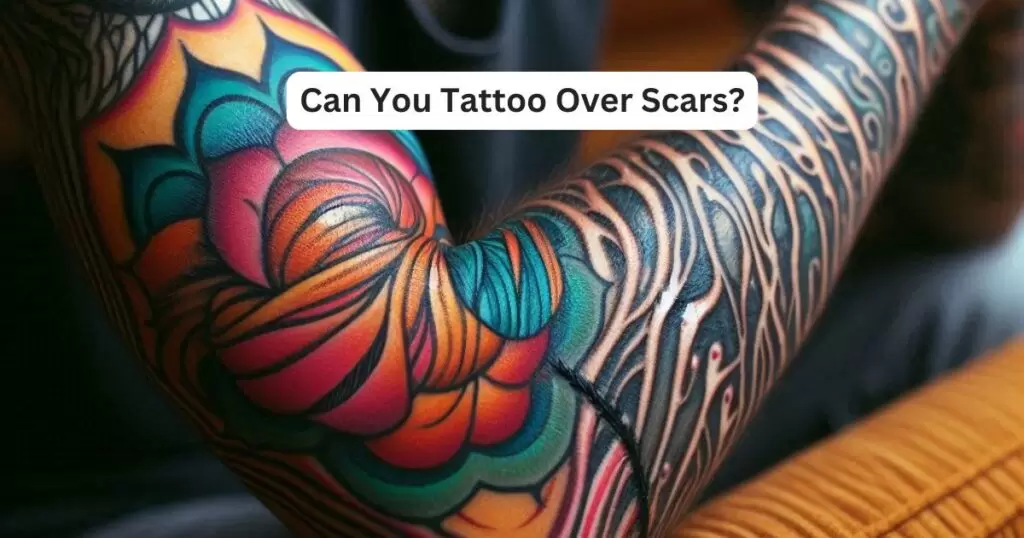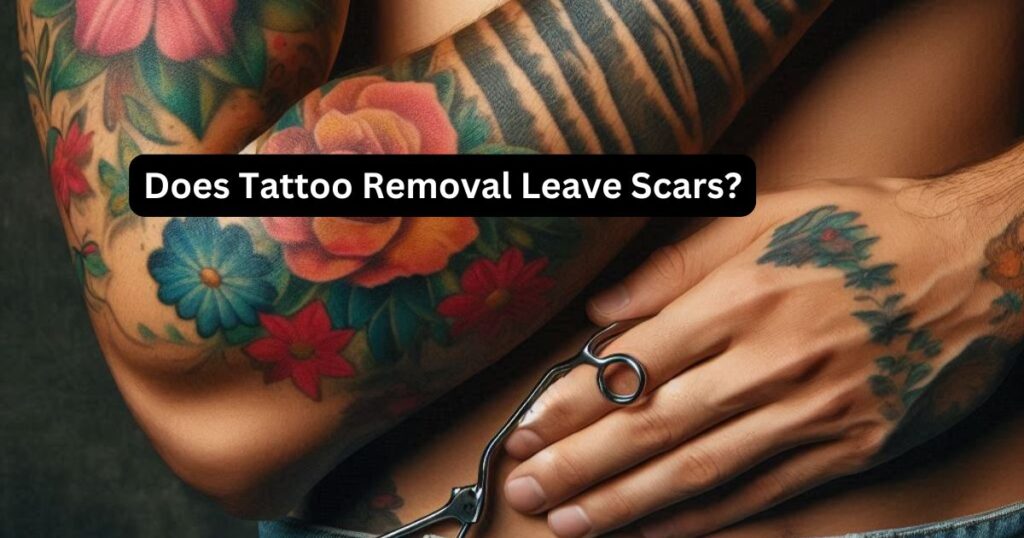Tattoos are a way to express yourself, commemorate important events, or simply enjoy body art. But what if you have a scar? Can you tattoo over it? Yes. However, it’s important to understand how scars and tattoos interact before making a decision.
Understanding Scars
Scars form as part of the body’s natural healing process after an injury. They are made of fibrous tissue that replaces normal skin after the wound heals.
Scars can vary in size, shape, and color, depending on factors like the severity of the injury and how well the wound healed.
There are different types of scars:
- Hypertrophic scars: Raised and red, these scars stay within the boundaries of the original wound.
- Keloid scars: Similar to hypertrophic scars but extend beyond the wound’s edges, often growing larger over time.
- Atrophic scars: Sunken or pitted, these scars are often a result of acne or chickenpox.
- Contracture scars: These scars tighten the skin, often occurring after burns, which can affect movement.
Tattooing Over Scars: What to Consider
Tattooing over scars is possible, but it requires careful consideration. Here’s what you need to know:
The Age of the Scar
Fresh scars are not suitable for tattooing. A scar needs time to fully heal before it can be tattooed. This usually takes at least one year, but it can take longer depending on the scar’s severity.
Tattooing too soon can lead to complications like further skin damage or poor ink retention. It’s best to wait until the scar has fully matured and the skin has settled.
The Type and Condition of the Scar
The type of scar you have will affect how the tattoo looks and how well the ink holds. For instance, hypertrophic and keloid scars may pose challenges due to their raised texture.
Keloid scars, in particular, are prone to overgrowth and may continue to grow after being tattooed. Atrophic scars, being sunken, might not hold ink evenly, potentially leading to uneven coloration.
Tattooing over contracture scars is more complex due to the tightness and possible mobility issues in the skin. The tattoo artist must consider these factors to ensure the design looks good and the process doesn’t cause harm.
Sensitivity and Pain Levels
Scar tissue is different from normal skin. It’s often more sensitive, making the tattooing process potentially more painful. Some people report feeling more discomfort when tattooing over a scar compared to unscarred skin.
Additionally, scar tissue doesn’t always absorb ink as well, which can require the artist to go over the area multiple times, increasing discomfort.
Choosing the Right Artist to Tattoo Over a Scar
Not all tattoo artists are experienced in working with scarred skin. It’s crucial to find an artist who has experience in tattooing over scars. They will know how to handle the different textures and challenges that scarred skin presents.
When choosing an artist, look for:
- Portfolio evidence: Ask to see examples of the artist’s previous work on scarred skin. This will give you an idea of their skill level and the results you can expect.
- Consultation: A reputable artist will offer a consultation to discuss your scar, the design you want, and the potential challenges. They should be honest about what’s achievable and any limitations.
- Hygiene practices: Ensure the artist follows strict hygiene protocols to prevent infection, which is particularly important when tattooing over scarred skin.
Tattoo Design Considerations
When tattooing over a scar, the design and placement are crucial. Here are some tips:
Simplicity is Key
Detailed designs with intricate lines may not work well on scarred skin. Scar tissue can distort fine details, leading to a less-than-ideal result.
Simple designs with bold lines and larger elements tend to work better. These designs can cover the scar more effectively and are less likely to be affected by the uneven texture.
Use of Color
Color can be tricky when tattooing over scars. Scar tissue may not hold color as well as normal skin, and some colors may fade or appear uneven. Black ink is generally the most reliable and tends to cover scars more effectively. However, if you want a colorful tattoo, it’s important to discuss this with your artist to set realistic expectations.
Placement and Flow
The placement of the tattoo in relation to the scar is another important consideration. The design should flow naturally with the scar’s shape and texture.
An experienced artist can incorporate the scar into the design, turning it into a feature rather than trying to hide it completely. This approach often results in a more cohesive and aesthetically pleasing tattoo.
The Healing Process
Healing after getting a tattoo over a scar can be different from tattooing unscarred skin. Here’s what to expect:
Slower Healing
Scarred skin may take longer to heal after a tattoo. The tissue has already been through trauma, and adding more can extend the healing time. It’s important to follow aftercare instructions carefully to prevent complications.
Aftercare
Proper aftercare is crucial for a tattoo over a scar. This includes keeping the area clean, avoiding picking at scabs, and moisturizing the skin as it heals. Your artist will provide specific aftercare instructions, and it’s important to follow them closely.
Potential Complications
Tattooing over scars can increase the risk of complications such as:
- Infection: Scar tissue is more vulnerable to infection, so maintaining cleanliness is vital.
- Ink Rejection: Sometimes, scar tissue doesn’t hold ink well, leading to patchy areas where the ink fades or doesn’t take at all.
- Extended Redness: The tattooed area might stay red and swollen longer than usual, especially on scar tissue.
Alternatives to Tattooing Over Scars
If tattooing over a scar isn’t a good option for you, there are alternatives to consider:
- Tattoo Adjacent to the Scar: Instead of tattooing directly over the scar, you can place the tattoo nearby. This can draw attention away from the scar while avoiding the challenges of tattooing on scar tissue.
- Scar Camouflage Tattooing: This technique involves tattooing skin-toned pigment into the scar to blend it with the surrounding skin. It’s often used for lighter scars and can be a good option if you want to minimize the scar’s appearance without a traditional tattoo.
Final Thoughts on Tattooing Over Scars
Tattooing over scars is possible, but it requires careful planning and consideration. The type of scar, its age, and the tattoo design all play significant roles in the outcome.
Finding an experienced artist is crucial to achieving the best results. If done correctly, a tattoo over a scar can transform a mark of past injury into a work of art that you can be proud of.



